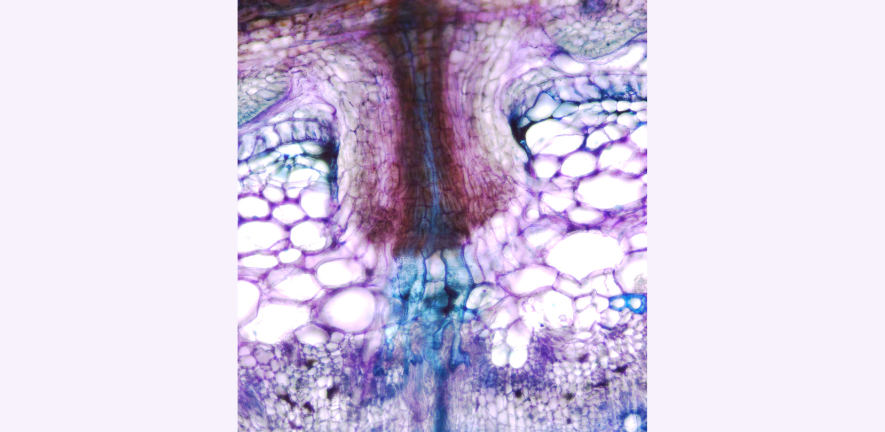
Submitted by Jane Durkin on Mon, 23/06/2025 - 13:03
Dr Min-Yao Jhu, Postdoctoral Research Associate in the Sustainable Crop Nutrition group at the Crop Science Centre (CSC), has published a review exploring how plants adaptively reuse core developmental pathways to build highly specialised organs during both mutualistic and parasitic interactions.
The review, 'From hosts to parasites: hormones driving symbiosis-induced de novo organogenesis', was co-authored with Dr Victor Hugo Moura De Souza from the CSC’s Plant–Parasite Interactions team and Dr Katharina Schiessl of the Sainsbury Laboratory Cambridge University. Together, the authors provide a comparative framework that links the formation of nematode-induced galls, nitrogen-fixing rhizobia-induced nodules, and parasitic plant haustoria to developmental programs shared with lateral root formation.
Despite their different evolutionary origins and biological functions, these organs frequently rely on shared developmental regulators and hormone signalling pathways. Auxin and cytokinin—two well-known plant hormones—consistently emerge as central players, shaping organ identity, patterning, and growth in all three systems. This convergence reflects the remarkable plasticity of plant development and the evolutionary ingenuity with which plants tailor their responses to a wide range of biotic partners.
“We found that even though these organs serve very different purposes—harbouring symbionts, extracting nutrients from hosts, or defending against parasites—their development is often regulated by similar genetic circuits,” said Dr Jhu. “This suggests that plants co-opt a conserved toolkit to form new organs when challenged by external biotic cues.” She added, “At the same time, some hormonal regulatory mechanisms are highly context-dependent—varying with developmental stage, cell type, species, or the type of biotic interaction. These context-specific dynamics help explain the diversity of organ structures we see across different symbiotic systems.”
By comparing hormonal signalling across systems that are usually studied in isolation, they aim to bridge gaps between different research communities. “Our goal is to highlight conserved developmental strategies that underpin both mutualistic and parasitic interactions—whether beneficial to both partners or advantageous to one at the expense of the other—and to spark new directions in research relevant to crop resilience and sustainable agriculture,” said Dr Jhu.
The review underscores the potential applications of this knowledge in agricultural biotechnology. Understanding how plants regulate organ formation in response to biotic partners and threats could inform the design of crops that are more efficient in nutrient uptake or more resilient to parasites.
Reference: Jhu et al. From hosts to parasites: hormones driving symbiosis-induced de novo organogenesis, Cell Press Trends in Plant Science, June 2025, doi.org/10.1016/j.tplants.2025.05.015.
Image: Vibratome cross-section of a tomato stem attached by a Cuscuta haustorium, stained with toluidine blue. Photo by Min-Yao Jhu.
